Welcome to Animals and Wildlife in South Carolina.
South Carolina is a small state with three geographical regions: humid summers, mild winters, and hot. It has a wide variety of wildlife like mink, long-tailed weasels, reptiles, birds, amphibians, rodents, etc.
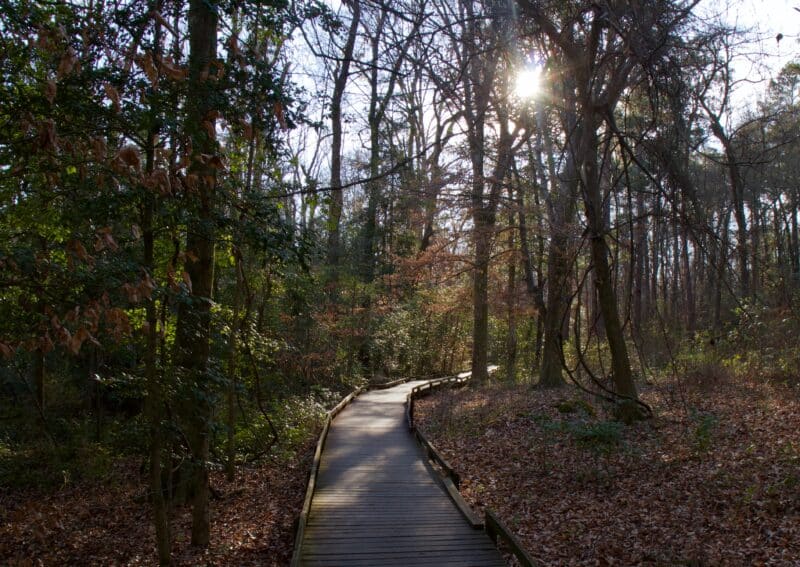
This state is home to many strange animals, predators, and some of the country’s unique animals, herbivores, and those seen and heard regularly. South Carolina’s vegetation differs according to province, and in the woodlands of Blue Ridge, there live many northern species.
Loblolly pine is the most common tree that is found in this province. White-tailed deer are popularly found in South Carolina, and it is found that South Carolina has around 300 species of birds.
Click below to jump to a section on animals in South Carolina:
Loggerhead Turtle
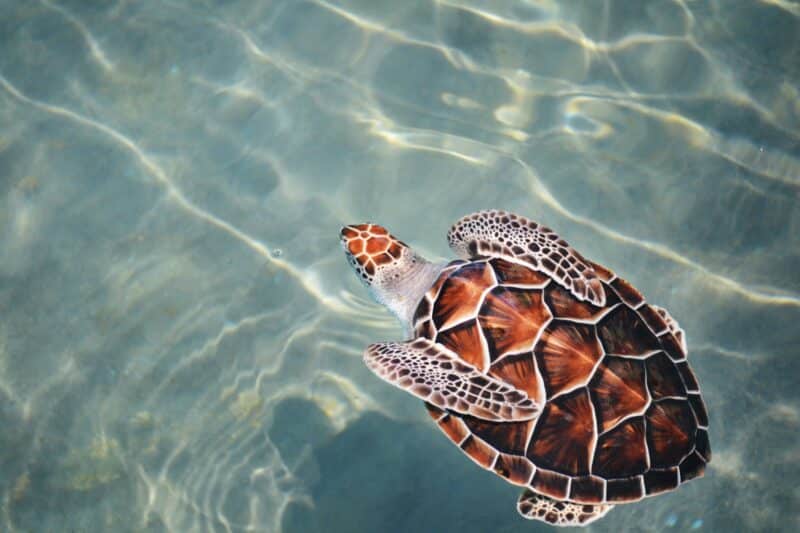
This particular turtle is found throughout the world. It belongs to the oceanic turtle species, known as a marine reptile, and belongs to the family Cheloniidae. Loggerhead turtles have a length of about 90 cm when fully grown. Adult loggerhead turtles can weigh up to 135kg, and a specimen was found to weigh up to 450 kg.
Their skin appears to be yellowish to brownish. Male loggerhead turtles and female loggerhead turtles present little sexual difference among them. It is found in the Indian, Atlantic, Pacific Oceans, and Mediterranean Seas. Loggerhead turtles spend their lives in saltwater habitats and have meager reproductive rates. Loggerhead turtles live up to 47-67 years and attain sexual maturity within 17-33 years. It is omnivorous.
Loggerhead turtles have vast and strong jaws, which turn out to be an effective tool for killing their prey. They have big heads; hence they are known as loggerhead turtles. Loggerhead turtles have a heart-shaped red colored shell. They have flippers in the front, which help them with water-like wings, while their back feet provide stability. It is a notable species as other animals depend on this turtle to survive in the ecosystem. Loggerhead turtles feed on invertebrates.
When they eat invertebrates, their shells pass through the turtle’s digestive system whole. The bodies are returned to the sea floor, a good calcium source for other animals. They also feed on shrimp, sponges, fish, jellyfish, sargassum, and seaweed. Predators and many other animals rely on loggerhead turtles for food. Loggerhead turtles live in subtropical and temperate regions. Loggerhead female turtles return to where they started hatching for laying their eggs. Due to this, they may travel long distances.
Loggerhead turtles use the earth’s magnetic field to travel through in sea. Magnetic marks are formed, which loggerhead turtles remember, and use for navigation. In the summer season, they start breeding. Female loggerhead sea turtles lay up to 130 eggs in a breeding season from different mating partners.
Where can one find Loggerhead Turtles in South Carolina?
The loggerhead turtle can be found on sea shores, and the best time to spot it is around sea shores in April through November, while on beaches from May through October. Loggerhead turtles are most common and are found in South Carolina’s coastal waters.
North American River Otter
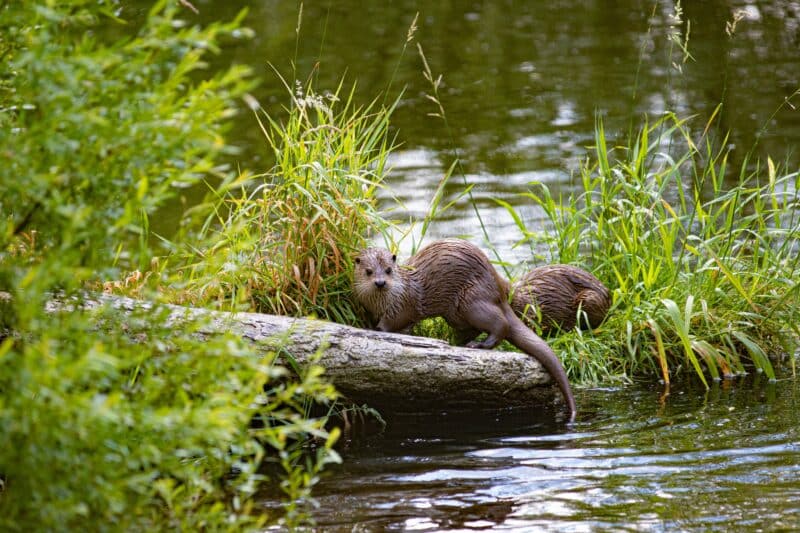
The North American river otter is a semiaquatic mammal endemic to North America, and it is also known as a river otter or just a northern river otter. It generally lives along the sides of water and coasts—Adult North American river otters weights around 5 to 14 kilograms.
Its thick coat of fur is present on its body, providing good protection. North American river otter belongs to the weasel family. It can be both on land and water. It makes burrows close to lake swamps, tidal flats, coastal shores, etc. They make multiple openings in these caves, so they easily enter and exit the water body. The female North American river otter gives birth to young river otters in these burrows made nearby water.
Like other predators, the North American river otter prey on the most efficient and readily accessible animal species. Fish is delicious food for these river otters, but they also feed on other animals like mussels, snails, tiny turtles, crayfish, salamanders, and frogs. Suckers, catfish, and perch are the most common fish these river otters consume.
Some reports show that river otters are also found eating birds, dogs, mice, squirrels, and other small animals accidentally killed and drowned. Due to the formation of European colonies in America, the number of North American river otters is decreasing. Environmental pollution is a significant factor leading to the decline in North American river otters.
Where can one find North American River Otters in South Carolina?
In South Carolina, one can find river otters on coastal shores. The river otter is the most abundant animal in South Carolina, located in Keowee Lake.
Frosted Flatwoods Salamander
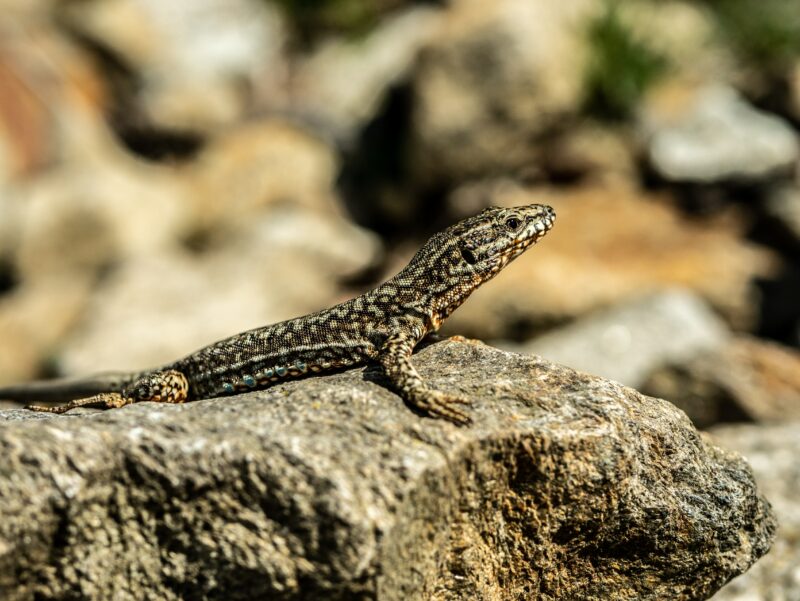
It is tiny, with a length of about 9 to 13.5 cm. It has short legs, a small head, and a long round tail. Frosted flatwood salamander has a brownish to a purplish color. Frosted flatwood salamander is found in the southeastern coastal plains of the United States—frosted flatwood salamander breeds in ponds, shallow grass, and herbs.
They live mostly underground in burrows they make. Frosted Flatwoods salamanders migrate from September through December during the rainy season. Female frosted flatwood salamanders lay 100 to 200 eggs. These salamanders are found to be occurring in the Atlantic and Coastal Plains. They live in wiregrass, longleaf, and slash pine flatwoods alongside other animals in South Carolina.
Adults frosted flatwood salamander is found to be living underground as these forest areas are prone to fire. These salamanders start breeding in winter, and the eggs are laid on land near burrows, leaves, and bushes. The eggs mature when the rain starts falling in dry caves or pond basins.
Where can one find Frosted Flatwoods Salamanders in South Carolina?
It is found that places have fewer vegetation ponds and below the logs. This species is found to be breeding in acidic conditions.
Corn Snake
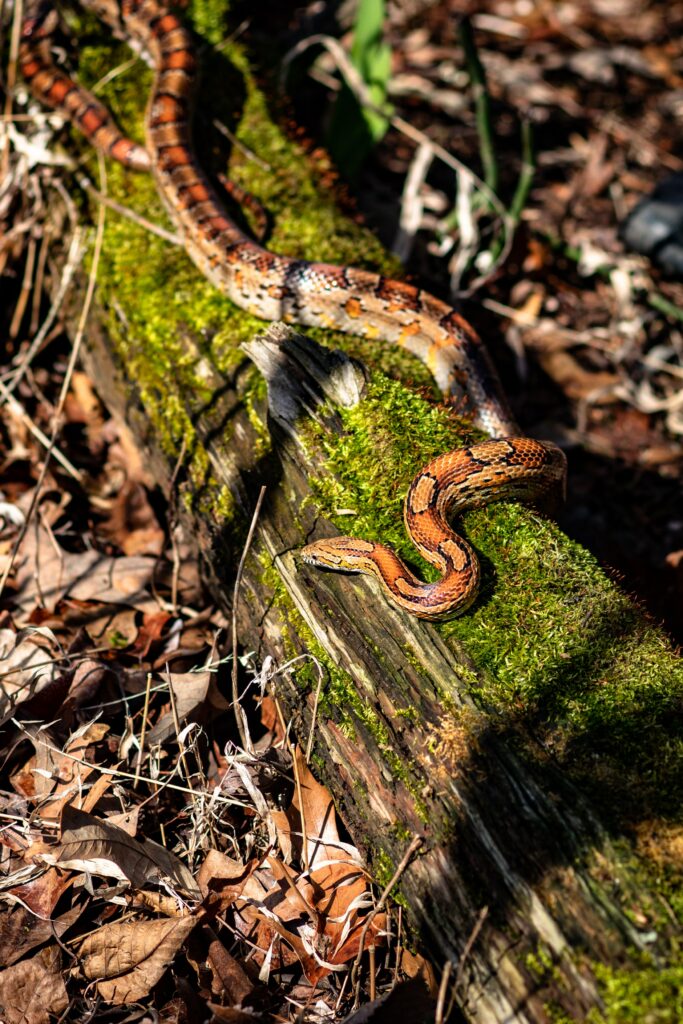
It is species of rat snake. It is found in the central and southeastern United States and appears like venom. Due to this reason, it gets killed. A corn snake is a harmless snake, and corn snakes eat pests and rodents, which is also a reason that it helps human beings as it protects crops.
It got its name as it is found near grain stores where it eats mice and rats. Its appearance resembles the kernels of corn. It prefers to live in forest openings, trees, flat woods, overgrown fields, buildings, and farms. Corn snakes live on the ground for four months. In the winter season, these snakes become inactive, and they get killed less in the winter as they are less active during this time. They live in rock crevices and logs during the winter but can also live in tight spaces.
The corn snake is giant in shape, with orange spots on its back. It can climb trees too. Corn snakes can grow 4ft in length and curl over the edges of forests. Corn snakes spend a lot of time underground, and corn sake can be found active during both day and night. Corn snakes become nocturnal in the summer season and lay several eggs in the spring.
Where can one find Corn Snakes in South Carolina?
The corn snake is found throughout South Carolina. They are found to be living on the outer part or edges of fields and forests. They have bright red-orange colors, easily identified even if they hide under tree logs or rock crevices.
Corn snakes are also known as red rat snakes. Corn snakes are good climbers and can be easily found while walking in the forests of South Carolina. There are around 42 species of snakes that can be found in South Carolina.
Polyphemus Moth
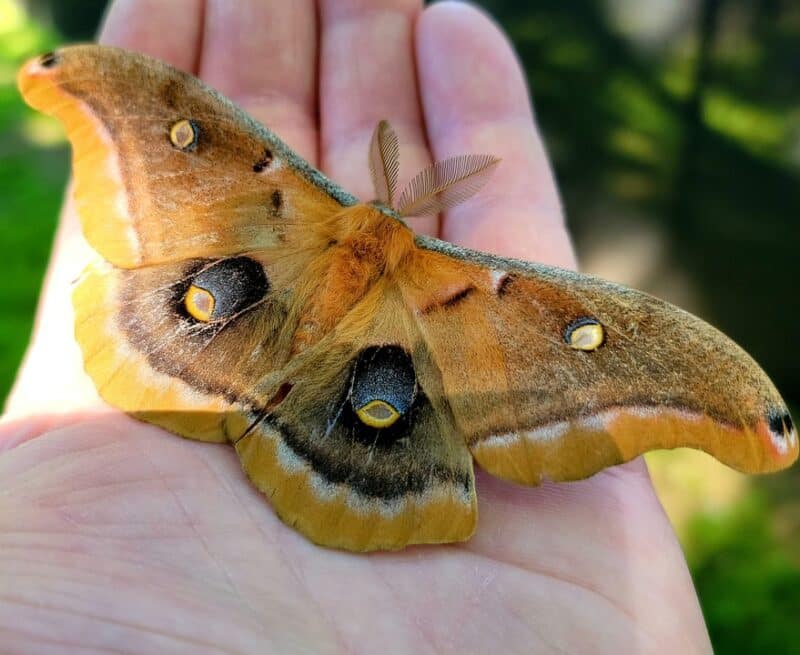
Polyphemus moths belong to the Saturniidae family. It has a wingspan of 6 inches. We can easily see the features of purplish eyespots on the hind wings and their prominent shape. It got its name from its eyespots. This moth species is widely spread across the continents of North America, and its other population is found in the United States and subarctic Canada. Polyphemus moths can eat 86,000 times compared to their weight.
Its life cycle is found to be similar to that of any other species which belongs to the family Saturniidae. Polyphemus moths lay eggs of light brown color on the leaves of flat host trees. It prefers trees like maple, hickory, beech, plum, apricot, cherry, pear, quince, etc. When the hatching of eggs starts, tiny yellow-colored caterpillars emerge. After this, when the caterpillar grows, they complete the life cycle five times and become a pupa.
The instar formed is slightly different, but on the final time, they appear dark green with silverish spots on the sides. Polyphemus moths feed mainly on their host plant, growing 3 to 4 inches long. Cocoons of brown silk appear wrapped in the host plant leaves. In the United States, two broods hatch each year.
One at the start of spring and the other at the end of summer. Moths get closed, and after this, they pump their wings with fluid, known as hemolymph, for elongation. When the female Polyphemus moth moves, she produces pheromones which male Polyphemus moths easily detect through their antennae.
Male Polyphemus moths can fly miles to reach female Polyphemus moths. When both male and female moths mate, the female moth spends most of its life laying eggs, but the male moth mates several times more. The mouths of adult Polyphemus moths have decreased, so they do not eat and live as adults only for one week. Among its family, the Polyphemus moth is very difficult to breed compared to others.
Where can one find Polyphemus Moths in South Carolina?
These moths are found almost all across South Carolina and can be easily found in agricultural, urban, and suburban areas. Adult Polyphemus moth gets easily attracted to the light, so they can easily be found around bulb holders in parks or gardens.
Eastern Fence Lizard
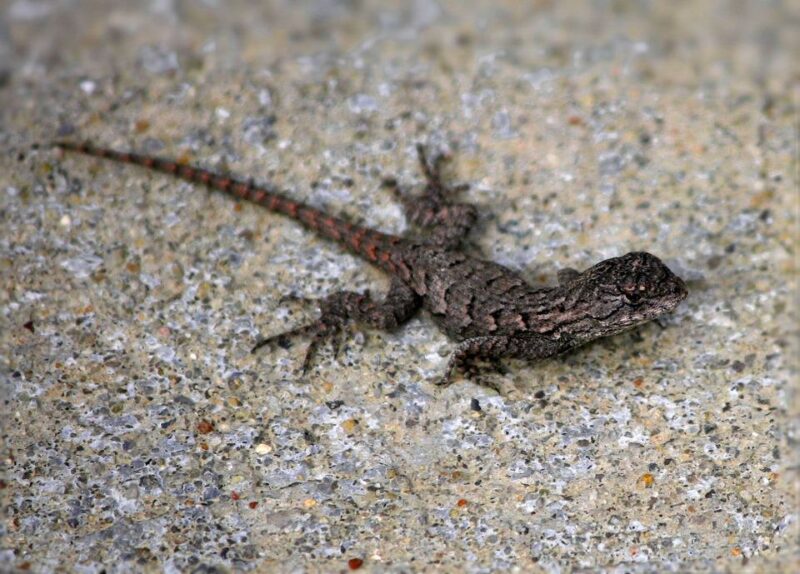
This lizard is small, has a length of 4 to 7.25 inches, and has rough scales on its body. The Eastern Fence lizard is a member of the spiny lizard family and belongs to South Carolina and Georgia.
These lizards are greyish but may have color ranges from black to brown. During the breeding season, female eastern fence lizards have black horizontal patterns on its back, while the male eastern fence lizards have blue spots on the chin and underside. Eastern fence lizard is commonly found in different habitats from coast to mountains.
Like other lizards commonly found on barrier islands, fence lizard is not much found there, and they are located far away from trees. Eastern fence lizard is most favorably found in open forests, where logs are present enough to hide. Eastern fence lizards feed on a large variety of invertebrates, spiders, and insects. Female eastern fence lizards lay 3 to 16 eggs at the end of spring. Hatching of eggs start in summer end, and the young one looks like miniature adults.
Where can one find Eastern Fence Lizards in South Carolina?
Eastern fence lizard is found on the ground but is mostly tree-dwelling. Like squirrels, when the east fence lizard is hunted, it stays on the opposite part as that of a predator. These lizards are commonly found in the southeast field edges and open forests with other animals in South Carolina.
Eastern Woodrat
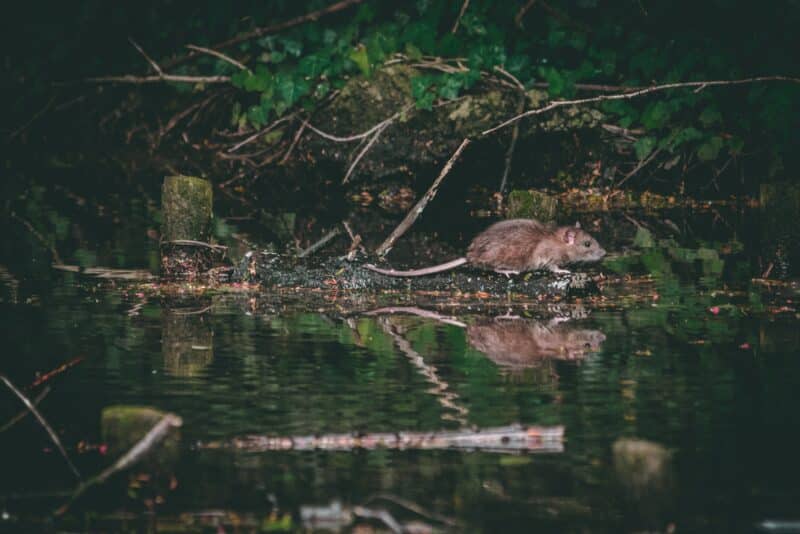
Eastern woodrat is a medium size rodent with thick fur, large eyes, visible ears, distinct whiskers, and mix colored furry tail smaller than half the length of the total body. Hair has a mixed color of black to greyish-brown, whereas the feet, throat, and underside are white. The furry tail also has color in contrast to blackish brown. It is generally found in caves, forested areas, and rocky outcrops.
Eastern woodrats are vegetarians, so they feed on grasses, nuts, seeds, fruits, herbs, and some parts of trees, such as leaves, roots, stems, bark, buds, etc. Their breeding season begins from February to September, but they breed year-round. The gestation period is 35 days, and female wood rats can mate even after giving birth. The young ones are blind and hairless and see the new world through their eyes on the 15th day.
They make their habitats on swamps, hedges, and woody areas with various habitats found. Their nests are on upland woods, scrub pine, grasslands, marshes, and buildings. Eastern woodrat gets away very fast from predators, which further protects their nests through different types of things like branches, rocks, dry dung, glass, lined dry grass, tin cans, sticks, rotting wood, loose soil, etc.
Eastern woodrats either pick the nest material by mouth or drag it, depending on the item’s size. Eastern woodrat nests have many entry and exit escape holes. Every home has two nests, but only one woodrat will be found in one home. Nests made can be easily found at 8 meters above ground in vines or trees but are generally located at ground level. These houses provide proper protection against rain, season changes, etc.
Eastern woodrat lives in one location their whole life, with the next generations living in the same nest. Nests in which no eastern woodrat lives or is empty get occupied by other animals like mice, snakes, rabbits, amphibians, and other invertebrates. Eastern woodrats live a solitary life.
The territory of females is smaller than that of males. As the eastern woodrat likes living alone, they do not go 21 meters from their nest but only for sexual activity or attractive food. Eastern woodrat also contributes to the food web as they are food for other predatory animals.
Where can one find Eastern Woodrats in South Carolina?
Eastern woodrat can be found in South Carolina in the southeastern part of coastal areas and the southwestern region in the mountains. These woodrats live in various habitats, like deciduous or pine forests and rocky areas. They are found in forests that are dry and also in the bottomlands, swamps, and coves.
They are also found in older fields and cuts. One should look out for eastern woodrats in latrines and bulky nests. These nests are built inside the house, and the restrooms are located on ledges of rocks where many piles get together. They have outstanding ecological importance and provide homes to other animal species.
They also have a massive impact on the forest ecosystem due to the transfer of seeds. These woodrats are commonly known for building large dens found in different locations.
Summary of Animals and Wildlife in South Carolina
Animals in South Carolina are abundant, and this list sought to investigate only a few animals in South Carolina. The habitats and feeding habits of the Loggerhead turtle, North American River Otter, Frosted Flatwoods Salamander, Corn Snake, Polyphemus Moth, Eastern Fence Lizard, and Eastern Woodrat have been discussed in detail above.
If you enjoyed reading about the animals in South Carolina, check out animals in Alaska and Idaho next!
- Top 10 Cutest Fish in the World - April 15, 2024
- 10 Most Endangered Animals - April 15, 2024
- 16 Top Predators in the Food Chain - April 12, 2024




